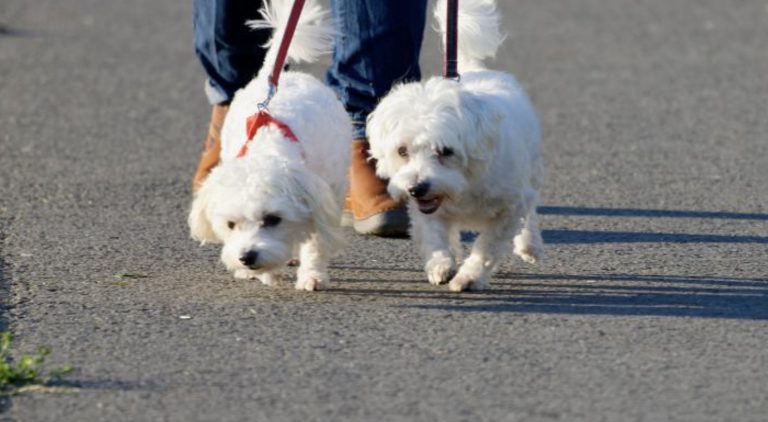Dog walking should be part of every dog owner and dog daily routine. Why do we walk our loved ones? Because it keeps our puppies physically and mentally healthy.
Now, today, we will try to talk about something different. And that is the structured walk. What is it? It is something that will change your life and your dog’s life for the better. Trust me, nothing will be the same once your start implementing some structure to your daily dog walking routine.
What is the difference between a structured walk and a regular walk? There is a huge difference. For starters, during a structured scheduled walk, it is your dog’s job to walk, plain and simple. There are no greetings, no sniffing, and no potty.
Now, you might be wondering, what about potty? Well, you do that before or after the structured walk.
Understanding structured walk
So, simply said, a structured walk is a walk based on bringing in more activities to your daily walk. With more activities, you, as a good pet owner, combine training, fun, and free time.
Now, you cannot start from Day 1 and expect great results. Why? Because before you try a structured walk, you should make sure your puppy is calm and relaxed. There should be no lead pulling or reactivity.
Once you master that, and your dog is calm, walks without any pulling, and doesn’t react to other dogs in an aggressive way, you can bring structure.
That will improve your dog’s skills and your bond with your puppy. Simply put, it makes walks more fun.
Now, structured walks are different for each and every dog. Depending on the breed, behavior, needs, and more factors, you can come up with a different structure.
Here is an example. Say you have an overexcited dog. If that is the case, a structured walk will focus on calm and relaxing activities. It will also give your puppy more free time. What you can do is add some more sniffing. Did you know that sniffing is actually relaxing for your puppy? Simply hide a treat and let your pup search for it.
And the best part is, a structured walk can also help with socialization. Socialization is not only meeting other dogs. It is also about building your dog’s confidence and making him calm around people, objects, and more.
What can you add to the walk?
When we talk about structured daily walks, we talk about activities you can add to your regular dog walking routine. I mentioned hiding treats around and letting your dog sniff. But here are some more examples of what activities you can add.
- Play tug of war
- Play fetch
- Try some basic obedience training
- Learn new tricks
- Learn new obedience commands and cues
- Play with a flirt pole
- Play hide and seek
- Let your dog sniff for more than usual
Basically, you can do anything your dog knows and already does at home. But now, you have the added challenge of distractions and a stressful environment.
Always finish the structured walk with a relaxing time. Pay attention to your furry friend. Watch as your dog is getting tired and finish the walk.
What do I do?
I want to give you an example of a structured activity I do with my puppy, Milo. We go to an open field in the mountains. And our walk lasts for an hour, or one hour and 30 minutes, depending on how much time we want to chill.
So, here is how it starts and what we do. Of course, we drive up there by car. Once we are there, I let Milo off leash, and he can sniff around as much as he likes. But of course, I often check on him with a recall command, just to make sure he comes back when I need him.
After some 10 to 15 minutes of trail walking, we get to the open field. It is large and flat, usually with no people around, and we can play.
This is when we start playing with some balls. Milo goes crazy for balls. During our play, we repeat commands like stay, sit, go to a place, under, walk with me, heel, sit during walks, and much more. And we play for some 10 to 15 minutes.
Then, it is all about relaxing. We try to find a good place to sit and relax. Milo is chilling, and so am I. After we rest for a while, we go back on the trail to our car, and that is it. Sometimes, I give him the ball to carry it back to the car, giving him a job to do. Or I have him in heel back to the vehicle. I always try to mix things up.
With our structured activity, he gets enough physical exercise and mental stimulation. He is happy, yet tired after it.
Of course, we do shorter walks during the day. Like walking to the dog park and playing there. But you get the idea. Do not let your regular walks be just for potty.
Add some structure and activities.
How often should you walk your dog?
Now, you might be thinking, hey, I cannot go on a structured walk every time we go out with my puppy. True, you do not need to go on a structured walk three times per day. You can have two potty walks and one structured walk.
On average, our beloved pets need to go out walking three to four times for about 15 minutes. But frequency and duration depend mostly on your dog’s breed.
Is a two-hour walk too long for your puppy?
There is no such thing as a too long walk for your puppy. Most of our beloved pets cannot wait to get outside. It is the single biggest reward for a puppy.
Now, there are some couch potatoes. They just love to hang around the home and enjoy. Think Maltese or Bichon Frise. But if you have an active furry friend, a two-hour walk every day is something you need to provide to your puppy.







